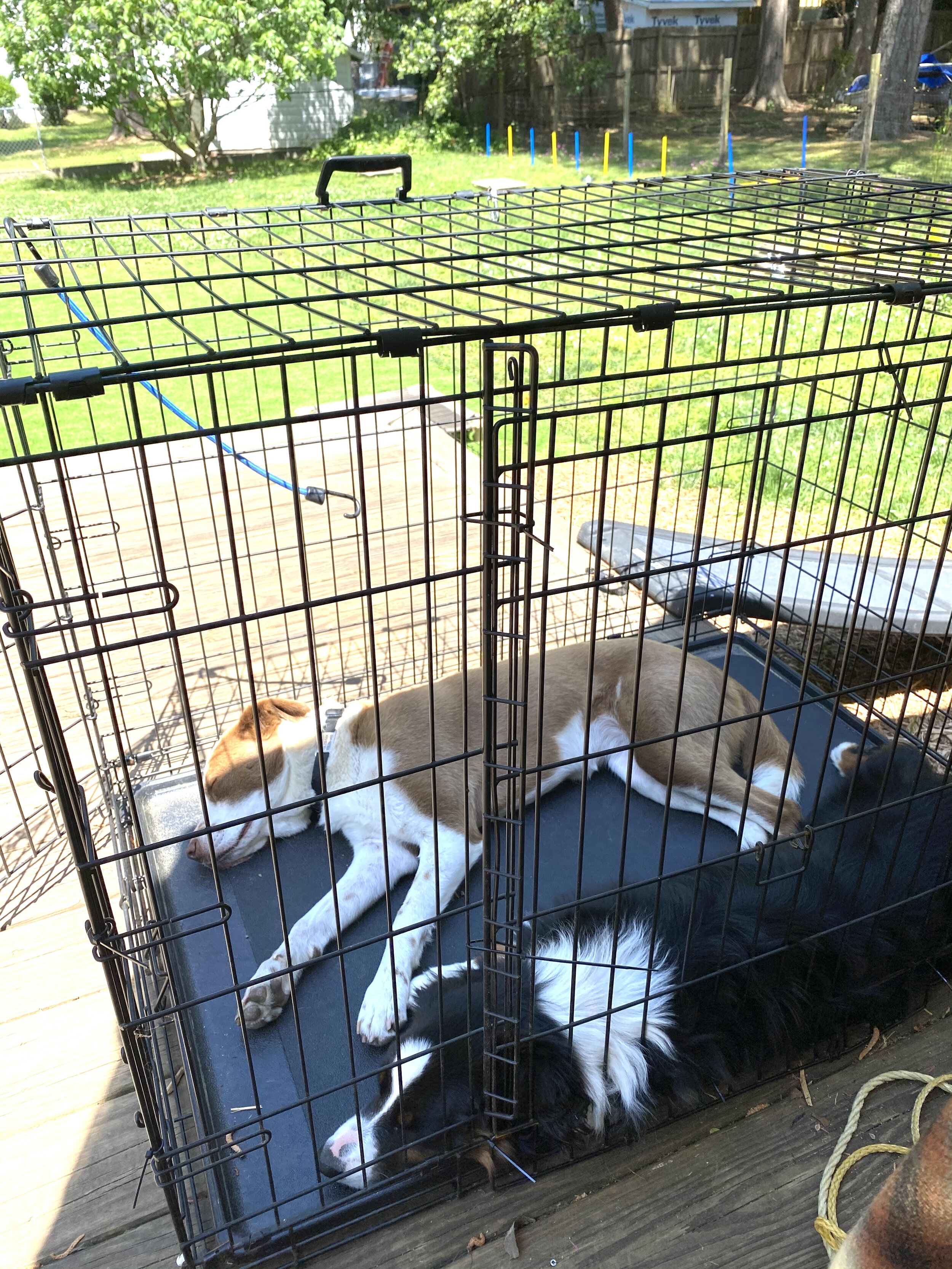Our Philosophy
WHAT DO DOGS REALLY WANT?
WHAT WE THINK DOGS WANT THE MOST:
FREEDOM, SOCIALIZATION, PLAY, AFFECTION.
WHAT DOGS REALLY WANT THE MOST:
STRUCTURE, LEADERSHIP, WORK, RESPECT.
We could add a lot to each list and yes they would begin to overlap with things like, Comfort, Companionship, Purpose, Contentment, Touch, etc... but if we’re looking at the top 4 most important needs, this perspective is important!
INDOOR LEASH WORK FOR CALMNESS AND AUTHORITY
Leash exercises in your home? Absolutely!! Leadership applies anywhere and everywhere. Give your dog this message early and convincingly and you’ll eventually be able to allow more freedom with control and calmness indoors and out. Lilly came into rescue with a lot of nervousness. You can see how she’s panting as they start, but it quiets down the longer that her new adopter leads her around the room.
DOGS FOLLOW YOUR BODY FIRST, THE LEASH SECOND. (WORDS LAST)
Your dog’s primary language is physical! If you want to teach them words, use their language first to guide them with both your body and the leash. Remember trying to learn high school French? Be patient, clear and expect them to make honest mistakes. And although it’s important to give each dog individual attention early on, two dogs can actually help each other in the process.
RESPECT AND THE “LOOK-AWAY”
Ashby (the cute beagle in the crate) went from fearfully challenging other dogs with his eyes and body language to showing respectful indifference. What’s significant here is that Ashby was looking at me initially from the crate but when I called my dogs over, he casually looked away. A human ignoring someone in this way would be considered rude but for dogs it’s reassuringly respectful and a good start to socialization.
ORGANIZATION. PACK STABILITY AND SAFETY DEPENDS ON IT.
As much as our dogs enjoy letting off steam by running, playing, exploring and goofing off, they crave dependable systems and order that they can rely on and turn to.
We are not just dog owners. We provide the blueprint our dogs work from. Draw with care.
TREATS. YOU CAN USE THEM TO
LURE, BRIBE AND DISTRACT YOUR DOG.
OR TO REWARD, TEACH AND LEAD.
If you can only capture your dog’s attention with food in your hand, you’ve done them a disservice.
The right language and guidance are themselves motivators that provide meaning and purpose to a dog’s life.
"JUST CAN’T HEAR YOU.”
That awesome dog you just brought home from the shelter or rescue....he isn’t ignoring you, he simply can’t hear or learn when adrenalized, nervous, and/or overly-excited.
At it’s worst, It’s like stopping someone to ask for directions when they’ve just run out of a burning building.
At it’s best, it’s like trying to teach kids math during recess. It just can’t happen. And it’s the most common reason adoptions fail.
Don’t wait until your dog is struggling and then expect him to learn/understand what you want or don’t want.
Set your dog up for success by teaching leash-language first in the home, in your yard, in your driveway— better yet, with a trainer who can provide the right tools and fill in the details for you.
“MY DOG HATES THE CRATE.”
—THINK AGAIN.
We call it a “Crate” - we could call it “Den”. A Den that provides rest, safety, decompression...a time when no decisions are required.
First, one of my dogs trotted in here to relax, then the boarding dog decided to join her. It's a beautiful day in a beautiful, big yard. The door to this crate is wide open. It's where they want to be.
Yes, it takes a type of training to acclimate and condition your dog to the crate. Knowing that it’s something that their natural instincts will lean into - and not away from - is a great place to start.
DOGS FROM RESCUE ARE LIKE ANY OTHER DOG.
Any dog, from any situation, could struggle with behaviors, learned or otherwise. Any dog, in any situation, could bypass those struggles.
Dogs purchased from breeders as puppies can be hard to train - or not.
Dogs adopted as puppies can be hard to train - or not.
Dogs adopted as adults can be hard to train - or not.
Not making assumptions but staying open to all options and committing to doing the work, serves everyone.
This is 2.5yo Sadie just 2 weeks with her adopters, here for assessment and introduction to foundation training. She’s quite a gem and has already settled into a routine with her humans that includes walks on the busy greenway and hanging out calmly at the brewery.
When choosing a dog to call family, there are many doors to be opened. Don’t limit your options. You might save a life in the process.








